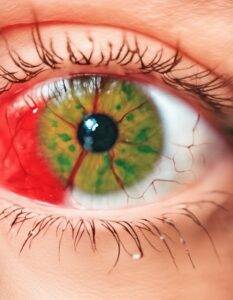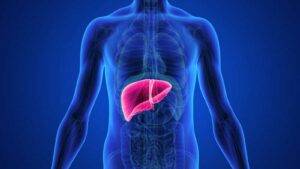Fatty liver disease, also known as hepatic steatosis, is a growing concern in the modern world. It occurs when excessive amounts of fat accumulate in the liver, impairing its normal function. While lifestyle modifications, particularly a healthy diet, are primary recommendations for managing the condition, there are circumstances in which dietary interventions may not be sufficient. In such cases, pharmaceuticals can play a crucial role in treating fatty liver disease. Let’s delve into the various pharmaceuticals currently used in the treatment of this condition, their history, and how they combat fatty liver disease.
Understanding Fatty Liver Disease
Fatty liver disease has become increasingly prevalent, with an estimated 25% of the global population affected. The primary cause is excessive alcohol consumption or non-alcoholic fatty liver disease (NAFLD), which is associated with obesity, insulin resistance, and metabolic syndrome. NAFLD can progress to a more severe form called non-alcoholic steatohepatitis (NASH), characterized by inflammation and liver cell damage. Ultimately, NASH can lead to cirrhosis, liver failure, and hepatocellular carcinoma.
Just a little heads up: some of the links on this site may be affiliate links, which means if you make a purchase through them, we might get a little kickback. But don’t worry, it won’t cost you a cent extra! Think of it as the universe secretly thanking us for helping you find a great deal. Your support keeps the good vibes flowing.
Pharmaceuticals for Fatty Liver Disease:
1. Metformin:
– History: Initially developed as an anti-diabetic medication, metformin has shown promise in treating fatty liver disease. It improves insulin sensitivity and reduces hepatic glucose production.
– Usage in Fatty Liver Disease: Metformin is now utilized as an adjunct therapy for patients with fatty liver disease, particularly those with diabetes. It not only helps manage blood sugar levels but also reduces liver fat accumulation and inflammation.
2. Vitamin E:
– History: Vitamin E, an essential fat-soluble vitamin, has proven antioxidant properties. It was originally used as a dietary supplement to prevent oxidative damage.
– Usage in Fatty Liver Disease: Studies have shown that vitamin E supplementation can improve liver enzymes, decrease liver inflammation, and even slow the progression of fibrosis in patients with NASH. It is commonly prescribed for patients with mild to moderate liver disease.
3. Pioglitazone:
– History: Pioglitazone belongs to a class of medications called thiazolidinediones, primarily developed as oral anti-diabetic drugs. They improve insulin sensitivity by activating peroxisome proliferator-activated receptors (PPARs).
– Usage in Fatty Liver Disease: Pioglitazone has demonstrated significant benefits in reducing liver fat, inflammation, and fibrosis in patients with NASH. Although it is associated with potential side effects, including weight gain, it offers a viable treatment option for non-diabetic individuals with fatty liver disease.
4. Obeticholic Acid:
– History: Obeticholic acid, a synthetic bile acid analog, was initially intended to treat primary biliary cholangitis, a rare liver disease. However, it has shown promise in treating certain patients with NASH.
– Usage in Fatty Liver Disease: In clinical trials, obeticholic acid has exhibited improvements in liver enzymes, inflammation, and fibrosis in patients with NASH. It is currently being evaluated for FDA approval and may provide a novel therapeutic option for managing this condition.
5. Statins:
– History: Statins are widely used for managing high cholesterol levels and preventing cardiovascular diseases. They act by inhibiting an enzyme involved in cholesterol synthesis.
– Usage in Fatty Liver Disease: While statins are primarily prescribed for their lipid-lowering properties, studies suggest they may also have a positive impact on fatty liver disease. Statins have been found to decrease liver fat content and improve liver function. However, further research is necessary to determine the optimal statin usage in patients with fatty liver disease.
While I do cite reputable sources, I am not a medical professional. Please use professional medical advice when making any health-related decisions.
Conclusion:
While dietary interventions are crucial for managing fatty liver disease, pharmaceuticals can provide additional support when lifestyle modifications are insufficient. Metformin, vitamin E, pioglitazone, obeticholic acid, and statins have all shown potential in combating this condition and its complications. It is important to consult a healthcare professional before incorporating these medications into your treatment plan. Remember, these pharmaceutical interventions should be used in conjunction with a healthy lifestyle for optimal results.
Sources:
– Metformin for non-alcoholic fatty liver disease: https://pubmed.ncbi.nlm.nih.gov/22131385/
– Vitamin E and non-alcoholic fatty liver disease: https://pubmed.ncbi.nlm.nih.gov/22901897/
– Pioglitazone for non-alcoholic fatty liver disease: https://pubmed.ncbi.nlm.nih.gov/17554510/
– Obeticholic acid for non-alcoholic fatty liver disease: https://pubmed.ncbi.nlm.nih.gov/31562713/
– Statins and non-alcoholic fatty liver disease: https://pubmed.ncbi.nlm.nih.gov/32064712/
Exploring Pharmaceuticals for the Treatment of Fatty Liver Disease: Beyond Dieting
fatty liver disease, hepatic steatosis, non-alcoholic fatty liver disease, NASH, pharmaceuticals, metformin, vitamin E, pioglitazone, obeticholic acid, statins, treatment, liver health

Just a little heads up: some of the links on this site may be affiliate links, which means if you make a purchase through them, we might get a little kickback. But don’t worry, it won’t cost you a cent extra! Think of it as the universe secretly thanking us for helping you find a great deal. Your support keeps the good vibes flowing.

































































































